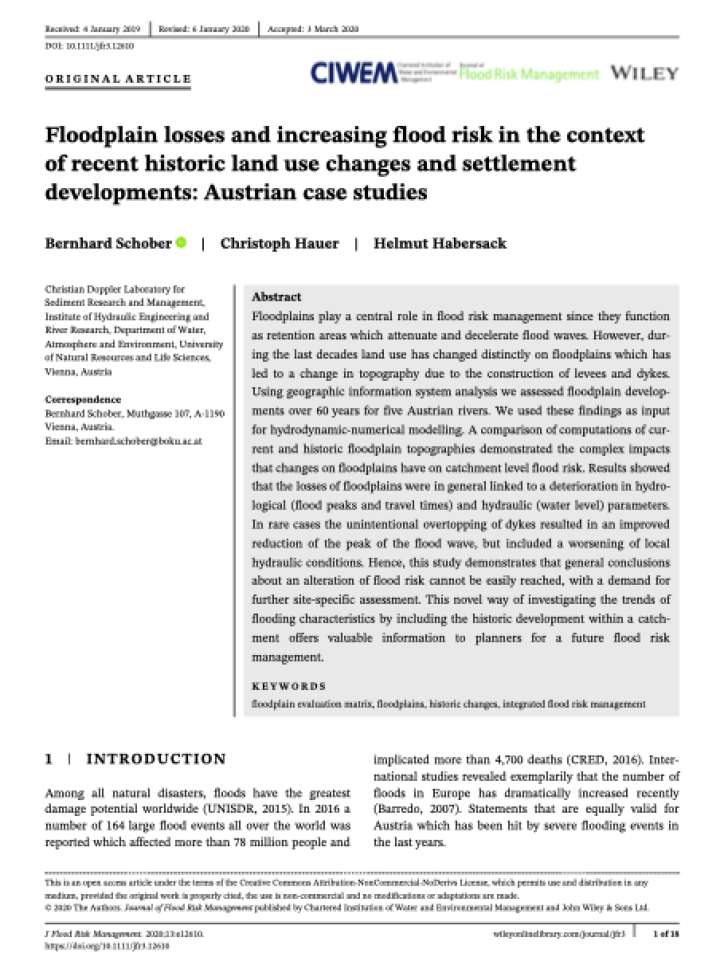Floodplain losses and increasing flood risk in the context of recent historic land use changes and settlement developments: Austrian case studies
Floodplains play a central role in flood risk management since they function as retention areas which attenuate and decelerate flood waves. However, during the last decades land use has changed distinctly on floodplains which has led to a change in topography due to the construction of levees and dykes.
Using geographic information system analysis we assessed floodplain developments over 60 years for five Austrian rivers. We used these findings as input for hydrodynamic‐numerical modelling. A comparison of computations of current and historic floodplain topographies demonstrated the complex impacts that changes on floodplains have on catchment level flood risk.
Results showed that the losses of floodplains were in general linked to a deterioration in hydrological (flood peaks and travel times) and hydraulic (water level) parameters. In rare cases the unintentional overtopping of dykes resulted in an improved reduction of the peak of the flood wave, but included a worsening of local hydraulic conditions. Hence, this study demonstrates that general conclusions about an alteration of flood risk cannot be easily reached, with a demand for further site‐specific assessment. This novel way of investigating the trends of flooding characteristics by including the historic development within a catchment offers valuable information to planners for a future flood risk management.
Explore further
